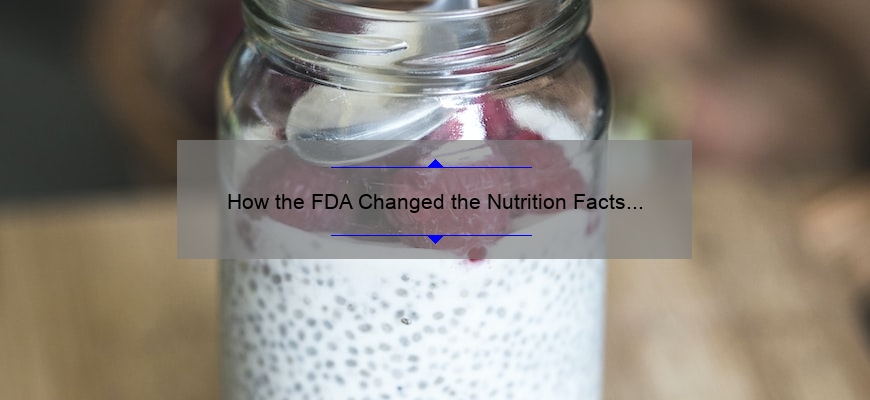A food label contains many vital pieces of information about a product. It must include the name and address of the manufacturer, as well as the business’s contact information. These addresses must be physical and cannot be e-mail addresses or phone numbers. It should also state the country of origin of the product.
Nutritional information
Many countries now require packaged foods to include nutritional information on the label. This information consists of the ingredients and nutrients in food. The data is usually based on official nutritional rating systems. Most countries also publish comprehensive nutrition guides. These guides help you choose healthy foods and healthy portions. However, it can still be challenging to determine the exact nutritional content of food.
In addition to displaying the number of calories, food labels also contain fat, carbohydrates, protein, sodium, and fiber information. This information should provide a more accurate picture of food nutrition than advertisements. The information must also mention any ingredients that can cause allergic reactions. It is important to read food labels carefully.
Nutritional information on food labels was first required by law in the U.S. in 1994. This legislation was signed by FDA commissioner Dr. David Kessler and became mandatory in May 1994. The act also required food companies to use the new label on packaged foods. However, meat and poultry products were not covered by this law. Therefore, the USDA and Commission proposed changing the titles to include information about these products. However, until then, all products used the old nutrition label.
The nutrient content of a food is measured by the percentage of the daily value (%DV) for each nutrient in a serving. The rates are in milligrams, grams, or micrograms and show how much each nutrient contributes to your daily diet. This information can also help you compare different foods.
Ingredients
The ingredients on a food label are vital to a product’s description. The list of ingredients must include the ingredient’s common name in parentheses. Common food allergens should be listed in the “contains” section. Foods containing artificial colors or flavorings must also include their names. Colorings are added to food using different ingredients, such as vegetable powders or spices. The list of ingredients must state whether these are certified color additives.
The ingredients on a food label must be accurate and listed in descending order of weight. The first ingredient should be the heaviest, and the last element should be the lightest. The ingredient list may be listed on the PDP or information panel but must be on the same board as the product’s manufacturer, packer, and distributor.
The ingredients on a food label can also be misleading. Knowing where an element comes from can affect whether a consumer will buy the product. For example, a food product may list corn in the ingredients list, but the consumer may not realize that corn is the parent ingredient of the other ingredients.
A network-based analysis of ingredients on food labels provides valuable insight into the most commonly used ingredients in the United States. Previous work has developed a comprehensive ingredient co-occurrence network for packaged food in the United States. The findings indicate that a small number of ingredients repeatedly appear on a food label. This approach is a novel approach for the analysis of food label ingredients.
Calorie content
The calorie content on food labels is a good way for consumers to monitor caloric intake and determine which foods are healthy for their bodies. Calories are calculated from the total energy in a food minus the amount excreted as waste. As a result, the actual calorie content of food is often higher than what is stated on the label. In some cases, the difference between the label’s total energy and the actual amount is as much as 25%.
Calories are the most common information on a nutrition facts panel, but there are other components that consumers should know about. The FDA recommends that Americans track their calorie intake to manage their weight. “calories per serving” and “low-fat” are among the most commonly used terms on nutrition facts panels.
The calorie content on a food label is the number of calories in a single serving, which is important when considering how much to eat. It is also essential to consider the amount of fat contained in a serving, as too much fat can be detrimental to one’s health. However, a small amount of fat is necessary for our bodies.
Similarly, the nutrient content on a food label helps make informed choices about how much you consume. The calorie information is usually provided in servings, which are standardized and based on 2,000 calories a day. This means that people with different calorie requirements should adjust the amount of food they consume based on their personal needs.
In addition to total and saturated fats, trans fats are listed on the nutrition label. Trans fats are only one-tenth of a gram, so trans fats in food are essentially zero calories. The sodium content on a food label is also essential, especially for people trying to reduce their sodium intake. A person should not consume more than 2,300 milligrams of sodium daily, equivalent to a teaspoon of table salt.
Health claims
Health claims are statements on the label that can help you make better choices about what to eat. These statements can lower your stroke, cancer, and heart disease risk. A diet rich in healthy foods can help you reduce your risk for these conditions. These claims are optional, but they can help you determine whether a food is healthy or not.
The FDA reviews food manufacturers’ health claims to ensure that they are balanced and based on reliable scientific studies. However, the FDA does not approve every claim on a food label, so they can’t guarantee you’ll get a healthy meal. So, how do you know if food is healthy?
Health claims on food labels must contain three main components: a substance, disease, or health-related condition and the word “cure.” A statement lacking one of these components isn’t a health claim. Other health claims on a food label are dietary guidance or comments about general categories of foods. While these are allowed, they should be truthful and not misleading.
A qualified health claim is a health claim that the FDA has approved based on scientific studies and authoritative statements of scientific bodies. The FDA has strict wording requirements and backs claims based on this evidence. You can read a summary of all the approved health claims in the Food Labeling Guide in Appendix C.
Some health claims on food labels are based on the level of certain nutrients. For example, a food can be declared “100 percent fat-free” if it contains no more than 0.5 grams of fat per 100 grams of the food. The FDA has set standards for nutrient content claims.
Country of origin
Generally, a country of origin label identifies the country of origin of food. However, in some cases, the country of origin is not specified on the label. These cases require an explanation of the product’s origin. A food label with a national origin statement must comply with the Information Standard for Food Labelling Information requirements.
Foods manufactured outside the United States must have a label stating their country of origin. This is required by law. This law also prohibits misleading statements about the country of origin. For example, a food label can specify that its product is made in Chile, but the title should not make misleading claims. However, certain products, such as oils, do not have to display a country of origin statement.
Labeling products with country of origin is voluntary in New Zealand and Australia, but it is mandatory in grape wine. In both countries, the country of origin information must be accurate and complete. It is also essential to provide the contact information for the food supplier. The information should be provided to consumers to determine the product’s source.
Labeling products from the country of origin has been mandatory in the United States since 2013. It is compulsory for meat, farm-raised fish, and some perishable agricultural products. The requirement to label such products was created in 2003, and the final rule went into effect on March 16, 2009. Consumers have a right to know where their food comes from. This law is intended to make it easier for people to make informed choices about the food they buy.
Countries implementing country-of-origin labeling laws allow consumers to choose local or regional foods. However, progress on national labeling laws has been slow. Despite being a part of the Farm Bill, COOL was not fully implemented until September 2006. This law largely depends on states and local governments to implement their regulations. Many consumers want to know the origin of their food. Some want to support their local farmers, while others are concerned about pesticides or mad cow disease.


